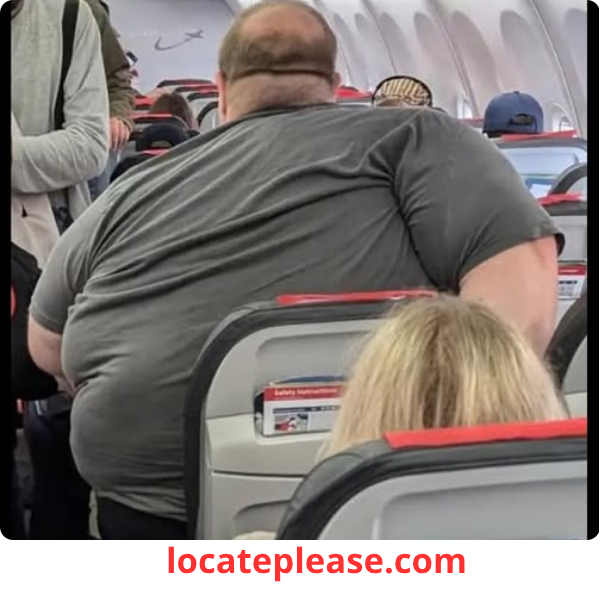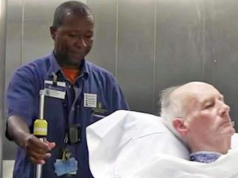A Viral Image Sparks Conversation About Body Size, Space, and Fairness in Air Travel
A recent image shared by travel advocate Christopher Elliott —and later reposted by hip-hop group Pretty Ricky —has reignited a passionate discussion about airline seating policies , passenger comfort , and the broader issue of body inclusivity in air travel .
The photo, taken on a flight from Helsinki to Copenhagen , shows a plus-sized passenger visibly struggling to fit into an airplane seat. What started as a simple post has turned into a global conversation touching on personal responsibility , airline accountability , and the need for systemic change in aviation design.
What’s Fueling the Fire?
At the heart of the debate lies this question:
Should airlines be responsible for accommodating all body types, or should passengers who can’t fit into one seat be required to purchase two?
The original post sparked thousands of comments across social media platforms, with opinions sharply divided.
🧍♂️ “Buy Two Seats” Argument:
Many commenters argued that if someone cannot comfortably sit within a single seat, they should buy an additional ticket—just like tall travelers who upgrade to extra legroom seats.
- Some compared it to movie theaters or restaurants where space comes at a premium.
- Others claimed fairness means everyone pays for what they use.
🪑 “Seats Are Too Small for Everyone” Counterpoint:
Critics of shrinking airline seats pointed out that the problem isn’t just about body size—it’s about how airlines have reduced legroom and seat width over time.
- Average economy class seat width has shrunk from 18–20 inches to as narrow as 16 inches .
- Legroom has been cut from 34+ inches pitch to as little as 28 inches in some planes.
Travel writer and consumer advocate Christopher Elliott emphasized that while airlines expect larger passengers to pay more, they are not investing in better-designed aircraft or wider seats for anyone.
Influencer Jaelynn Chaney Speaks Out
Plus-size travel influencer Jaelynn Chaney joined the conversation with a powerful message:
“The burden shouldn’t fall on individuals to fit into spaces designed for a shrinking average.”
She argues that airlines should:
- Offer free extra seating for those who need it
- Expand seat sizes to accommodate diverse bodies
- Treat larger passengers with dignity—not shame
Chaney also called for a “Fat Equality Bill of Rights” for air travel, including:
- Mandatory seat width disclosures
- No-cost seat upgrades for those who need them
- More inclusive design in new aircraft
Her stance has gained traction among advocates who believe that accessibility should not be optional —especially when flying is a public service.
Airlines Caught Between Profit and Inclusion
Airlines have long defended their current seating models by citing cost efficiency , fuel savings, and the demand for more seats per row.
But critics argue that:
- Shrinking seat sizes hurts all passengers , not just plus-sized ones.
- Narrow seats create safety concerns during emergencies.
- The industry needs to evolve its designs to reflect modern body diversity.
Some airlines offer free second seats for medical reasons—but not for general comfort. Others allow passengers to book two seats at a discount if available. Still, most require full-price purchases for both.
Public Opinion Is Split — But Passionate
Here’s a snapshot of the ongoing debate:
|
Viewpoint
|
Summary
|
|---|---|
|
Seat = One Person:
|
Passengers must fit in one seat; if not, they should buy another.
|
|
Blame the Airlines:
|
Seat sizes have shrunk—everyone is affected, not just plus-size flyers.
|
|
Personal Responsibility:
|
Health and fitness choices impact travel needs; airlines shouldn’t foot the bill.
|
|
Systemic Change Needed:
|
Airlines must adapt through policy reform and inclusive design.
|
While many responses were thoughtful, others were harsh—blaming individuals for their size and calling for stricter rules.
Calls for Legislative Action Grow
As the debate intensifies, so do calls for regulation. Activists are pushing for:
- A Fat Equality Bill of Rights for air travel
- Laws requiring wider seats or clearer seat dimensions
- Mandatory accommodation policies similar to ADA protections
This would place legal pressure on airlines to rethink their approach to body diversity and accessibility.
Some point to Amtrak and Greyhound , which already offer wider seating without requiring double payments unless medically necessary.
The Bottom Line: Who Owns the Problem?
This viral image has become a flashpoint in a growing movement toward inclusive travel .
Whether you side with personal responsibility or systemic change, one thing is clear:
- Airline seating has become increasingly uncomfortable for everyone.
- Passenger diversity is growing—and the industry may not be keeping up.
As flying becomes less comfortable across the board, the question remains:
Should people have to fit into outdated seat sizes—or should airlines update the sizes to fit real people?
It’s Not Just a Seat Issue—It’s a Human One
The image from Helsinki to Copenhagen didn’t just spark a debate—it exposed a growing divide between individual expectations and corporate realities in modern air travel.
Whether you see the issue through a lens of fair pricing , design evolution , or social justice , one truth stands out:
Flying should be accessible, safe, and respectful for every body type.
So next time you fly, take a look around. You’re not the only one feeling squeezed.
And maybe the real question isn’t who needs two seats—but why we’re all being asked to fit into smaller ones .










